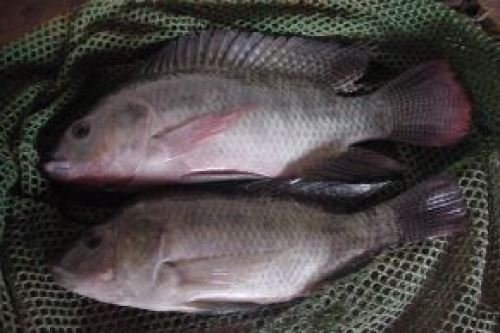
Understanding how genes influence observable traits (phenotypes) is a fundamental question in biology. While many genes have been identified as linked to specific characteristics, unraveling the precise molecular mechanisms connecting genotype (genetic composition) with phenotype remains a significant challenge, particularly for complex traits like life histories.
A study conducted at the University of Helsinki shows how a single gene in Atlantic salmon (Salmo salar) can dramatically influence the timing of puberty, a key factor for the salmon’s life cycle and survival. Researchers discovered that the gene, known as vgll3, acts as a master regulator controlling thousands of other genes involved in various aspects of salmon sexual maturation.
The Challenge of Linking Genotype to Phenotype
- 1 The Challenge of Linking Genotype to Phenotype
- 2 A Key Gene in Atlantic Salmon: The Vestigial-Like 3 (vgll3) Gene
- 3 Deciphering the Molecular Mechanism: A Multi-Omics Approach
- 4 Genotype-Dependent Interactions with Transcription Factors
- 5 Implications for Evolution and Complex Traits
- 6 Entradas relacionadas:
Connecting genotype to phenotype is particularly complex for traits influenced by multiple genes and environmental factors. Life history traits, such as the age at sexual maturity, are prime examples. These traits often involve coordinated changes in various physiological processes, making it difficult to pinpoint the specific molecular mechanisms at play. This knowledge gap hinders our understanding of the evolutionary forces shaping these traits.
A Key Gene in Atlantic Salmon: The Vestigial-Like 3 (vgll3) Gene
In Atlantic salmon, a key life cycle trait—the age at sexual maturity—is strongly associated with a gene called vestigial-like 3 (vgll3). This gene encodes a transcription cofactor, a protein that interacts with other proteins to regulate gene expression. While the genetic association is relatively straightforward, the way vgll3 influences age of maturation is surprisingly complex.
“Imagine a single switch determining whether puberty starts at age 13 or 20 in humans. Vgll3 plays a similar role in salmon, influencing traits such as when reproductive cells begin to develop, growth patterns, and behavioral changes. Our findings explain how genetic variation in a single gene can have such dramatic effects on highly complex and multifaceted traits like puberty or age of maturation,” explains Associate Professor Jukka-Pekka Verta, now at Nord University, Norway, who conducted this study as part of his postdoctoral research at the University of Helsinki.
Deciphering the Molecular Mechanism: A Multi-Omics Approach
The researchers used a multi-omics approach, combining genomics, transcriptomics (gene expression analysis), and proteomics (protein analysis), to investigate how the vgll3 genotype affects the age of maturation in salmon testes. They found that different vgll3 genotypes lead to distinct molecular changes that ultimately influence the timing of puberty.
The study revealed that the vgll3 genotype associated with early maturation positively regulates (increases the activity of) several key genetic pathways:
- Androgen production: Androgens are hormones critical for male sexual development and maturation. Increased androgen production accelerates the onset of puberty.
- Cellular energy and adiposity: These pathways are linked to metabolic processes and energy storage, which are essential to meet the energy demands of sexual maturation.
- TGF-β signaling: This signaling pathway plays a role in various cellular processes, including growth, differentiation, and development, and is also implicated in puberty initiation.
This discovery not only explains how complex traits like puberty onset evolve and vary but also highlights a process called “pleiotropy,” where a single gene affects multiple characteristics, akin to the role of a conductor in an orchestra.
Stay Always Informed
Join our communities to instantly receive the most important news, reports, and analysis from the aquaculture industry.
Genotype-Dependent Interactions with Transcription Factors
Further investigations revealed that VGLL3 interacts with different transcription factors that bind to DNA depending on the genotype. This genotype-dependent interaction allows VGLL3 to coordinate the differential activation of various regulatory pathways, leading to the observed differences in age of maturation. Simply put, different versions of the vgll3 gene interact with other regulatory proteins in unique ways, causing different sets of genes to be turned on or off.
Implications for Evolution and Complex Traits
This study provides critical insights into the molecular mechanisms underlying the evolution of complex traits. It demonstrates how a single gene with a relatively simple genetic basis can have far-reaching effects by influencing multiple interconnected molecular pathways. This mechanism explains how a single gene can mediate the evolution of complex traits such as alternative life histories.
The findings highlight the importance of understanding the molecular functions of genes to fully comprehend the link between genotype and phenotype. By uncovering the intricate regulatory mechanisms controlled by vgll3, this research offers a deeper understanding of the evolutionary processes shaping the life history strategies of Atlantic salmon and potentially other species as well.
Finally, the research emphasizes that even seemingly simple genetic associations can have complex molecular underpinnings, driving the evolution of ecologically relevant and complex traits.
Contact
Jukka-Pekka Verta
Associate Professor, Nord University
Email: jukka-pekka.verta@nord.no
Craig Primmer
Professor, Faculty of Biological and Environmental Sciences and Institute for Biotechnology (HiLIFE), University of Helsinki
Email: craig.primmer@helsinki.fi
Reference (open access)
Verta, J., E., J., Donner, I., Frapin, M., Ruokolainen, A., Debes, P. V., Erkinaro, J., & Primmer, C. R. (2024). A complex mechanism translating variation of a simple genetic architecture into alternative life histories. Proceedings of the National Academy of Sciences, 121(48), e2402386121. https://doi.org/10.1073/pnas.2402386121
Editor at the digital magazine AquaHoy. He holds a degree in Aquaculture Biology from the National University of Santa (UNS) and a Master’s degree in Science and Innovation Management from the Polytechnic University of Valencia, with postgraduate diplomas in Business Innovation and Innovation Management. He possesses extensive experience in the aquaculture and fisheries sector, having led the Fisheries Innovation Unit of the National Program for Innovation in Fisheries and Aquaculture (PNIPA). He has served as a senior consultant in technology watch, an innovation project formulator and advisor, and a lecturer at UNS. He is a member of the Peruvian College of Biologists and was recognized by the World Aquaculture Society (WAS) in 2016 for his contribution to aquaculture.




